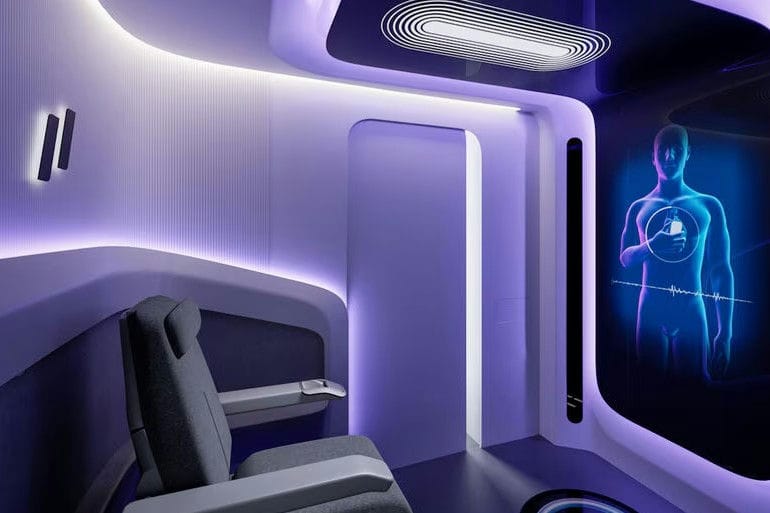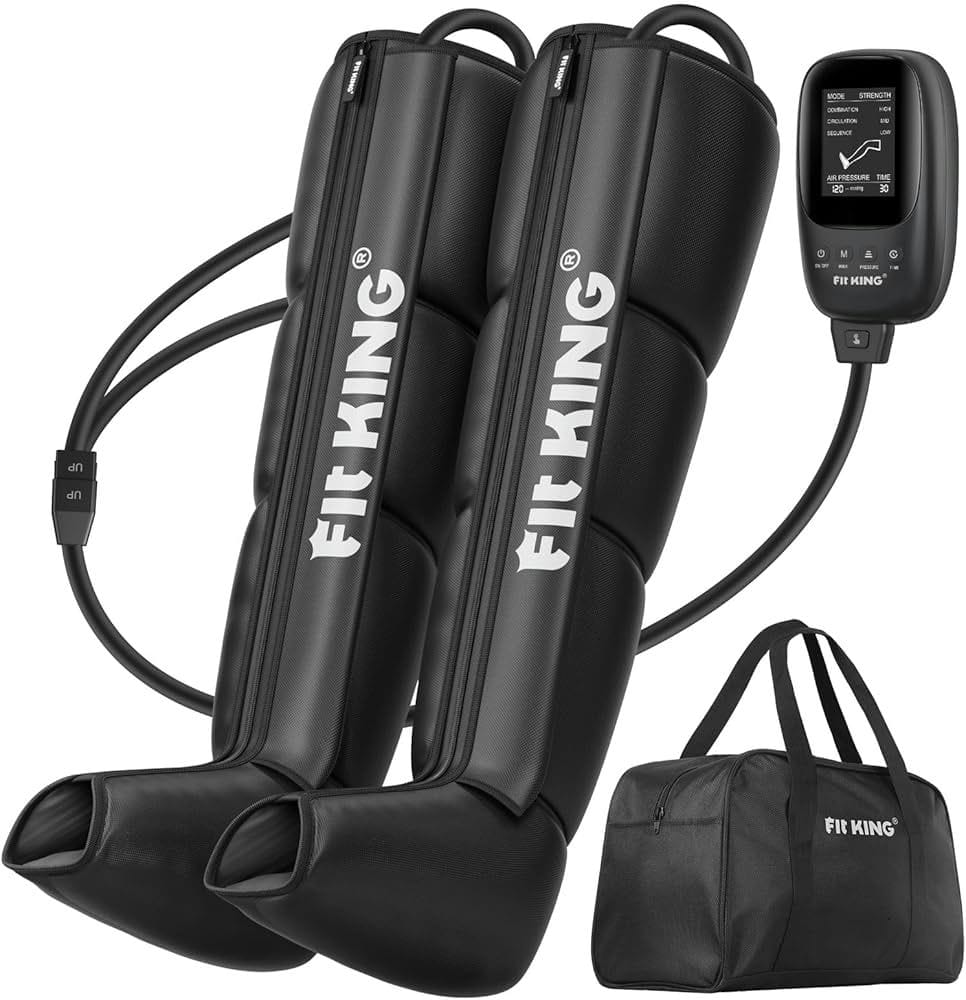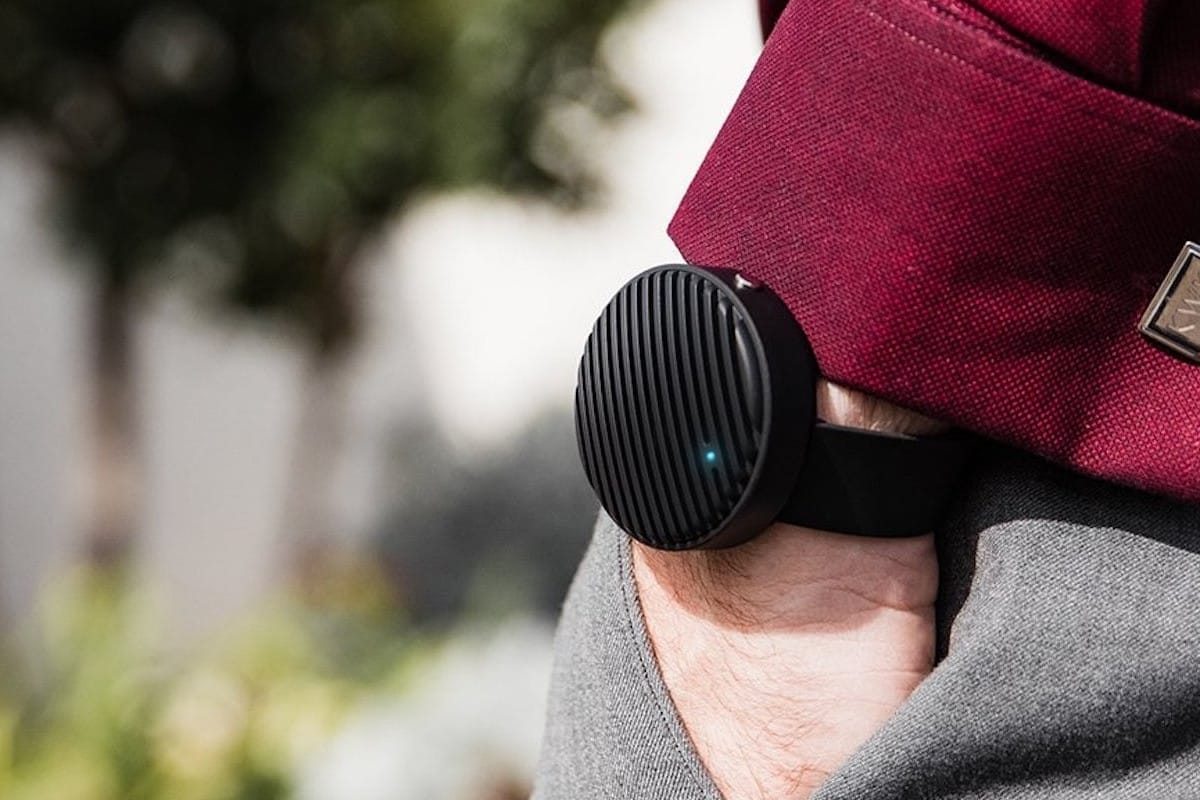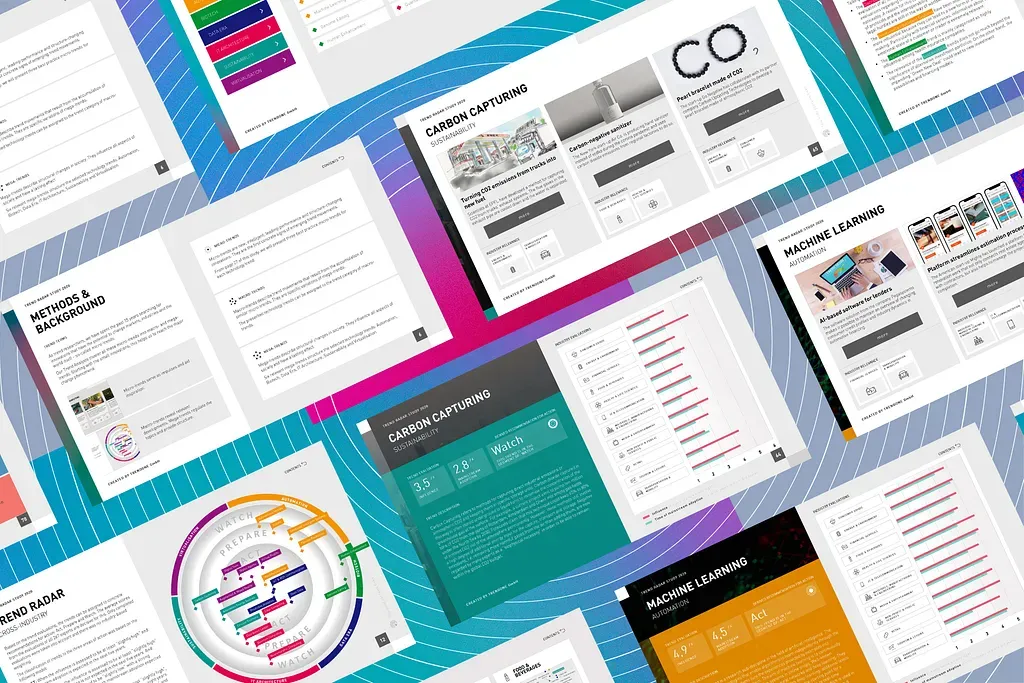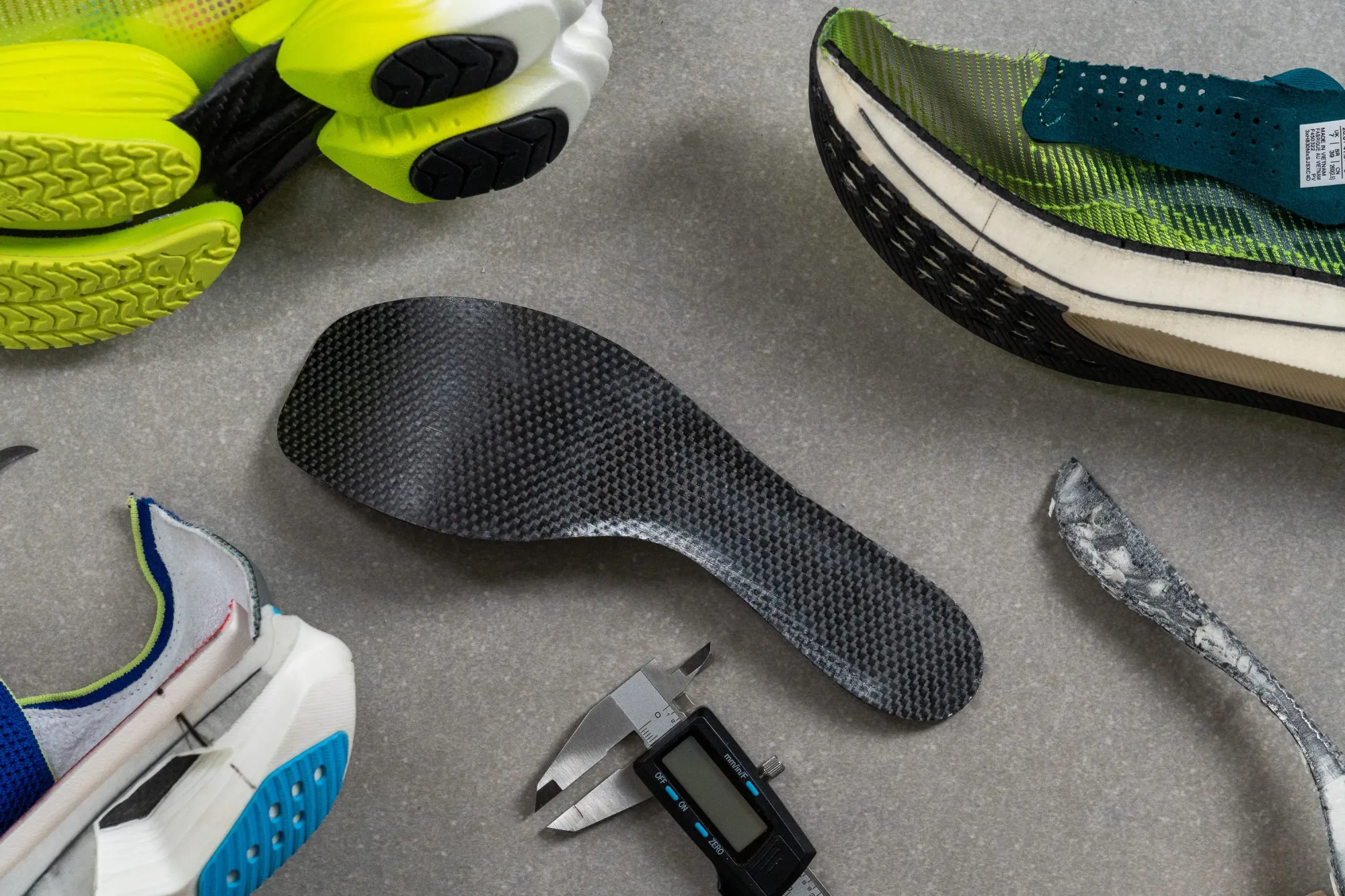AI-powered healthcare pods are self-contained diagnostic kiosks that combine biometric sensors, lab analyzers, imaging modules and AI-driven decision support to deliver comprehensive health screenings without on-site clinicians. Positioned in workplaces, malls, airports and wellness centers, these “clinic-in-a-box” units offer rapid vital-sign checks, blood tests, ECGs, skin scans and mental-health triage, with results interpreted by machine-learning algorithms and followed by telehealth consultations. By automating routine diagnostics and triage, pods reduce costs, expand access, and cater to consumer demand for convenience and preventive care.
What Are AI-Powered Healthcare Pods?
- Physical Setup: Booth-style enclosures equipped with touch-screens, automated blood-draw arms or finger-stick stations, PPG sensors, blood-pressure cuffs, SpO₂ probes, high-resolution cameras and sometimes portable ultrasound or X-ray units.
- Software Platform: AI models analyze vitals, lab values, imaging and questionnaire data to flag abnormalities, generate reports and recommend next steps. Telehealth integration connects users to remote clinicians for review and prescriptions.
- User Flow: Consumer scans a QR code or taps membership card, enters basic history, undergoes self-administered measurements, then reviews AI-generated report and schedules any follow-up via the embedded telehealth portal.
Key Trend Drivers
-
Consumerization of Healthcare
Patients demand the same on-demand, self-service convenience in health that they enjoy in retail and banking. Pods deliver a retail-style experience with transparent pricing and no appointments required. -
AI & Automation Advances
Breakthroughs in computer vision (skin-lesion detection), natural-language triage, lab automation and predictive analytics enable reliable, rapid diagnostics without human operators. -
Cost Pressures & Clinician Shortages
Automating routine screenings offloads primary-care workflows, addresses provider scarcity, and reduces per-patient costs by minimizing staff and space needs. -
Preventive & Remote Care Shift
Post-pandemic emphasis on early detection, remote monitoring and telehealth has accelerated investment in decentralized diagnostic solutions.
Target Consumer Profiles
| Segment | Characteristics | Motivations |
|---|---|---|
| Busy Professionals | Urban, time-pressed, tech-savvy | Quick check-ups without clinic visits |
| Preventive Health Advocates | Health-span focused, self-funding | Early disease detection, peace of mind |
| Fitness Enthusiasts | Gym members, biohackers | Performance metrics, recovery monitoring |
| Rural & Underserved Populations | Limited local clinics | Accessible basic diagnostics |
| Employers & Insurers | Cost-containment focus | Reduce claims, improve workforce health |
Health & Functional Benefits
- Comprehensive Vital Screening
Automated measurement of blood pressure, heart rate, SpO₂, temperature and weight in under 5 minutes. - On-Site Lab Panels
Finger-stick or vacuum blood draws processed by integrated analyzers for CBC, metabolic panel, lipid profile and HbA1c. - Dermatology & Vision Checks
AI-driven skin lesion analysis and vision acuity tests with instant anomaly alerts. - Mental-Health Triage
Interactive questionnaires processed by NLP models to assess depression, anxiety and stress, with automated tele-therapy referrals. - Longitudinal Tracking
Data stored in user’s digital health record, enabling trend analysis and personalized risk scoring over time.
Market Dynamics & Size
- Global Decentralized Diagnostics Market: Estimated at USD 12 billion in 2024, projected to grow at ~15 % CAGR through 2030.
- AI-Driven Clinic Segment: Early pilots (Forward CarePod, CVS HealthHUB) have attracted > US $500 million in venture funding since 2022.
- Unit Economics: Typical pod costs range USD 150 k–300 k CAPEX, with per-use fees of USD 25–75; break-even at ~ 300 visits/month.
- Deployment Footprint: Over 200 pods operational in North America and UAE; expansion planned to Europe and Asia-Pacific by 2026.
Product Formats & Innovation
| Format | Description | Use Case |
|---|---|---|
| Standalone Kiosk Pod | Fixed booth with full diagnostic suite | Malls, airports, corporate campuses |
| Mobile Van Pod | Vehicle-mounted unit for community outreach | Rural health drives, pop-up events |
| Modular Clinic Wall | Retrofit panel modules for existing clinics | Hospital expansions, pharmacy clinics |
| Tele-health Hybrid Pod | Pod + live video station for real-time physician consults | Complex case evaluations |
| Pop-Up Wellness Pods | Temporary installations at conferences and sporting events | Mass screenings, employee health fairs |
Challenges & Considerations
- Technical Reliability
Automated blood draws and sensor calibrations can fail, leading to user frustration and repeat visits. - Regulatory & Liability
Pod operations straddle medical-device and clinical practice regulations; securing FDA/CE clearance and malpractice coverage is complex. - Data Privacy & Security
Handling PHI in semi-public settings demands end-to-end encryption, secure sample transport and strict consent protocols. - User Trust & Adoption
Some patients distrust AI-only diagnoses; ensuring transparent algorithms and human backup is critical for acceptance.
Future Outlook & Opportunities
- Integration with EHR & Telehealth
Bi-directional data flow between pods, hospital EHRs and telemedicine platforms for seamless patient journeys. - Expanded Diagnostic Panels
Addition of genetic screening, infectious-disease PCR, and continuous glucose monitoring for chronic-disease management. - AI-Driven Predictive Analytics
Aggregated pod data feeding ML models to predict disease outbreaks, personalize preventive care and optimize population health. - Global Franchising
Licensing pod technology to healthcare providers and wellness resorts in emerging markets to extend primary-care access.
Conclusion
AI-powered healthcare pods represent a paradigm shift in decentralized, preventive medicine—merging advanced diagnostics, AI interpretation and telehealth into a convenient, on-demand format. Overcoming technical, regulatory and trust barriers will be key to scaling pods from novel pilots into ubiquitous care touchpoints, democratizing access and reducing healthcare costs.
Sources
- https://www.gminsights.com/industry-analysis/decentralized-diagnostics-market
- https://www.marketsandmarkets.com/Market-Reports/telehealth-market-264953670.html
- https://www.fiercehealthcare.com/tech/forward-raises-100m-series-e-health-pod-expansion
- https://www.healthaffairs.org/do/10.1377/hblog20240215.23153/full/
- https://www.cvshealth.com/news/company-news/cvs-health-launches-health-hub-with-virtual-care


